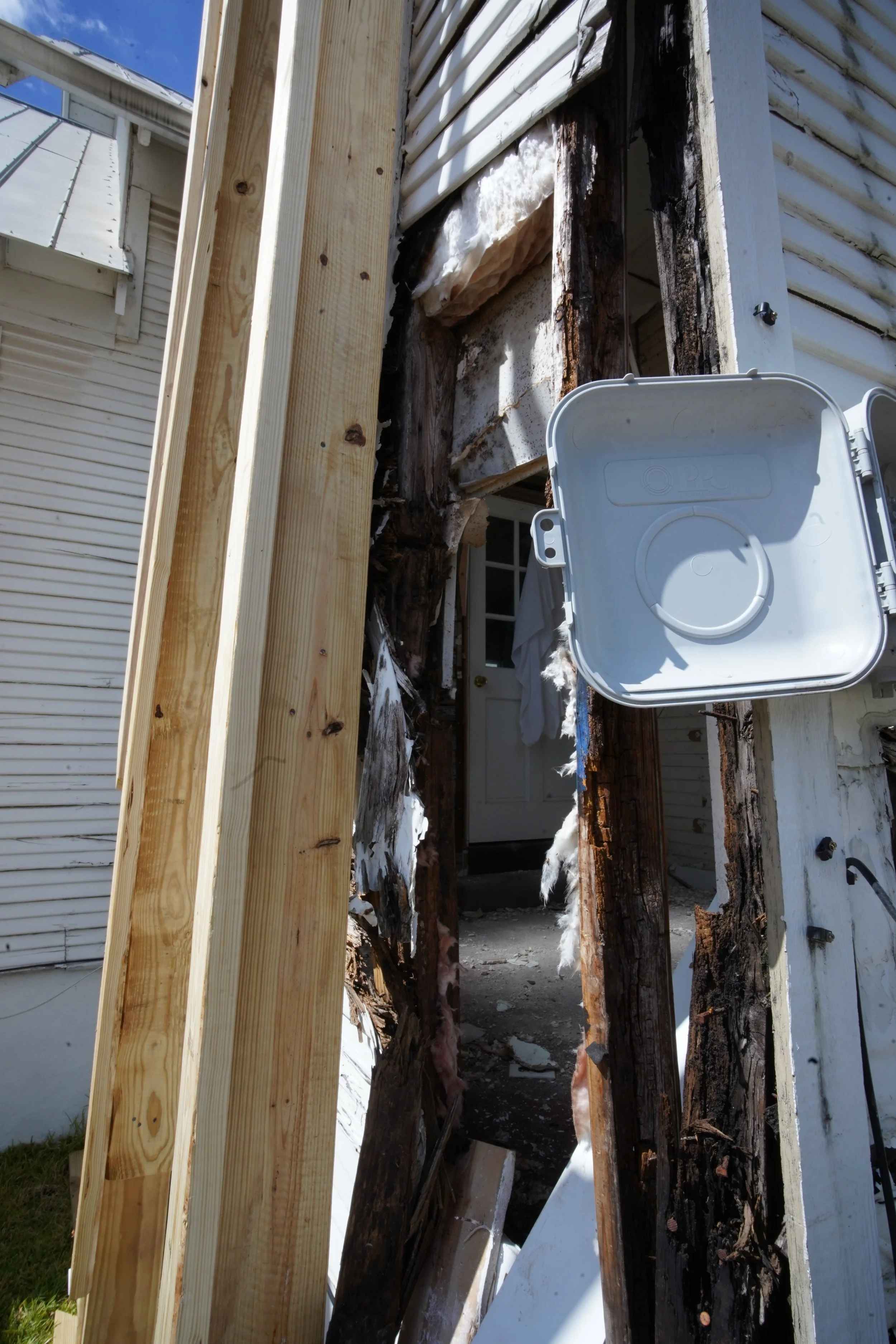Restoring Paul Quinn AME Church: Preserving Faith Through Reconstruction
Photo by NaKiva Washington Fitzpatrick
On a bright October afternoon, the familiar walls of Paul Quinn African Methodist Episcopal Church bell tower stood partially shadowed by scaffolding and machinery. Nestled within Bastrop’s historic South End District, the church has long been a cornerstone of Black faith and community life. Originally organized as an AME Church in 1876 by Reverend Joseph Morgan, the congregation formally became Paul Quinn AME Church in 1886, marked by the laying of its cornerstone on June 13 of that year.
The present sanctuary on Walnut Street was constructed in 1925, following the purchase of the site by Reverend O. H. Benns from the Haynie Griesenbeck Estate, according to Ellen Moore in The Bastrop Advertiser article, “Historic Bastrop Church Growing with Gipson,” published on March 3, 1994. With nearly a century and a half of history, Paul Quinn AME endures as one of Bastrop’s oldest Black churches—a living monument to the faith, perseverance, and unbroken spirit of the community.
(1912) Sanborn Fire Insurance Map from Bastrop, Bastrop County, Texas. Sanborn Map Company, Jan. [Map] Retrieved from the Library of Congress, https://www.loc.gov/item/sanborn08421_006/.
As restoration crews worked carefully around the church’s weathered tower, I stopped to speak with Steven, one of the site workers, who described the project’s delicate nature. “You can’t rush something like this,” he said, glancing toward the tower. “When we opened it up, we saw water damage all through the wood. Inside, some of the walls just moved—like they could shift if you touched them.”
Photo by NaKiva Washington Fitzpatrick
The restoration effort, led by a private contractor specializing in historic preservation, focuses primarily on dismantling and rebuilding the tower structure to meet modern safety and building codes while maintaining its original elevation and historic form. “We’re taking it down and rebuilding it up to code,” Steven explained. “Same height, same look, same everything—but strong enough to survive another hundred years.”
The damage revealed was extensive. Years of exposure had eroded much of the tower’s wooden interior to dust, leaving walls unstable and dangerously compromised. “It’s just gone,” Steven continued. “When we took off the panels, the wood inside wasn’t wood anymore. It was like dust.”
Photographs from Steven’s drone show a visible lean in the tower—its frame tilting after decades of unchecked water intrusion. The damage appeared to stem from leaks near the roofline, allowing moisture to seep downward, weakening the beams and causing gradual structural decay.
Outside the sanctuary, Zach, an electrician who recently joined the project, confirmed the installation of new underground electrical service lines to replace the breakers that were located on the exterior wall of the bell tower. “We moved the electrical service underground so they can bring the tower down safely,” Zach explained. “We built this new system in the last couple of days. The church should have full power restored by tonight.”
Photos by NaKiva Washington Fitzpatrick
Despite the ongoing work, Sunday services have continued, a testament to the congregation’s commitment to preserving both faith and heritage. “They told us they’re still meeting every week,” Zach said with a smile. “That tells you how important this church still is.”
As I walked the grounds, the deep historical resonance of the site was unmistakable. Paul Quinn AME Church, named for Bishop Paul Quinn—the fourth bishop of the AME denomination—has stood for nearly a century and a half as a pillar of spiritual and social strength for Bastrop’s Black community. It served as a space for worship, education, and civic gathering during Reconstruction, the Jim Crow era, and the Civil Rights movement.
Today, its reconstruction stands not just as a repair project but as an act of preservation and reverence. “This building needs love,” Steven said quietly before returning to work. “But when we’re done, it’ll stand like it’s supposed to—like it always has.”
As the South End District continues its journey of renewal and recognition through the city’s historic preservation efforts, Paul Quinn AME remains a vivid reminder that the past is not a relic—it’s a living inheritance being restored, one beam at a time.











